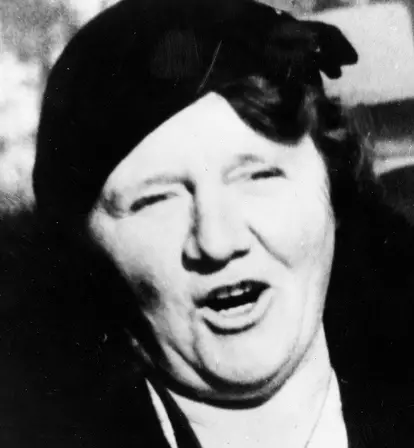Angela Hitler was the Führer's favorite sister who remained loyal to him even after he began a romantic relationship with Angela's daughter, Geli Raubal.
Besides the woman with whom he would die, there was one other woman who would defend the Nazi dictator until the end of her life. They grew up together. She was his housekeeper — and she was the mother of his love interest.
Meet Hitler’s half-sister, Angela Hitler.
Who Was Angela Hitler?
Angela Hitler was the older half-sister of Adolf Hitler. She was born July 28, 1883, in Braunau, Austria-Hungary to Alois Hitler and his second wife, Frankiska (Frannie) Matzelsberger.
Angela’s brother Alois Jr. was born one year before her. Their mother died of tuberculosis when Angela was about two years old, and Alois married his third wife, Klara Poölz, in 1885.
With Klara, Alois had six more children, only two of whom survived into adulthood: Adolf Hitler and Paula.

Wikimedia CommonsAngela Hitler’s father, Alois Hitler, in 1901.
Later, in his famous Mein Kampf, Adolf Hitler wrote that their family lived a peaceful and quiet life, and that his father and mother cared for them with “eternally the same loving-kindness.”
Other evidence points to the contrary, however. Alois Sr. reportedly expected “absolute obedience” from his children, and Angela and Alois Jr.’s joint diary describes the family as dysfunctional and violent.
Likewise, Paula’s journal recalls how, like their father, her brother Adolf regularly beat her. In one entry, Paula recalls at around eight years old: “Once again I feel my brother’s loose hand across my face.” Historians believe that “the terror of the Third Reich was cultivated in Hitler’s own home.”
From an early age, Angela became fond of her younger half-brother, despite her belief that he was spoiled. Even though Paula was Adolf’s full sister, he was reportedly closest with Angela.

Wikimedia CommonsAdolf Hitler as a child.
According to psychoanalyst Walter C. Langer’s contemporary report on the Hitler family, Angela seemed “to be the most normal one in the family and from all reports is rather a decent and industrious person.”
Angela Hitler’s Life Before The Great War
Despite her famous surname and important role in the life of one of history’s most reviled men, information on Angela’s life is incomplete and sources are scarce.
It is known that she married Leo Raubal, a tax collector from Linz, in 1903, the same year that her father died. Together they had three children: Leo Rudolf Raubal, Angela (Geli) Raubal, and Elfriede (Friedl) Raubal. Angela was widowed in 1910, left to care for the children herself, and her activity during World War I is unclear.
At this point, it seems that she in part lost touch with her half-brother Adolf.
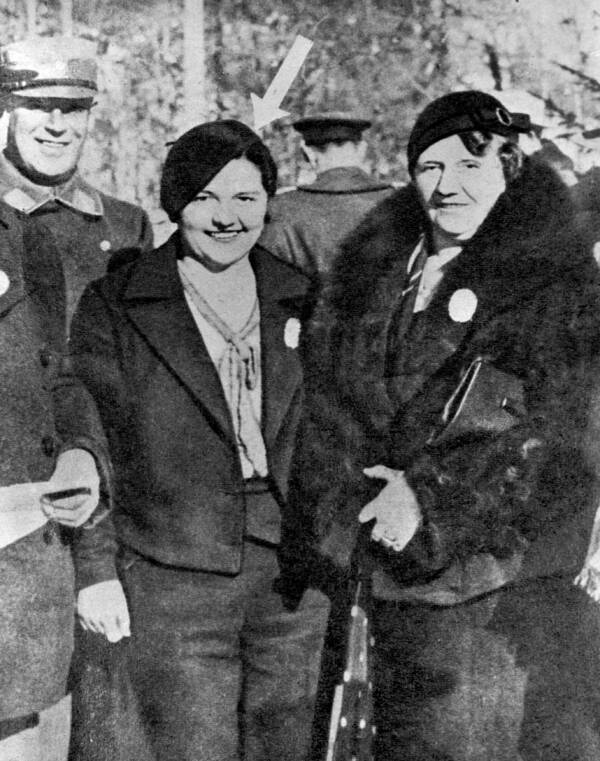
Hulton-Deutsch Collection/CORBIS/Corbis via Getty ImagesAngela Hitler Raubal, right, with her daughter, Geli.
After World War I, she moved to Vienna. Some sources suggest that she worked as a housekeeper at a convent school, but most agree that she managed Mensa Academia Judaica, a boarding house for Jewish students. In this role, she was noted to have protected the borders from anti-Semitic riots and shielded the children from violence.
According to Langer, “in the student riots Angela defended the Jewish students from attack and on several occasions beat the Aryan students off the steps of the dining hall with a club.” He continued to describe her at this stage of her life as a “rather large, strong peasant type of person who is well able to take an active part.”
The Adolf-Geli Love Saga
Adolf Hitler returned to Munich following World War I, and at 33 years old, became the National Socialist Party’s leader. After about 10 years of lost contact, he and Angela reconnected when he visited her in Vienna. A few years later, in 1924, Angela went to see him while he was incarcerated in Landsberg.
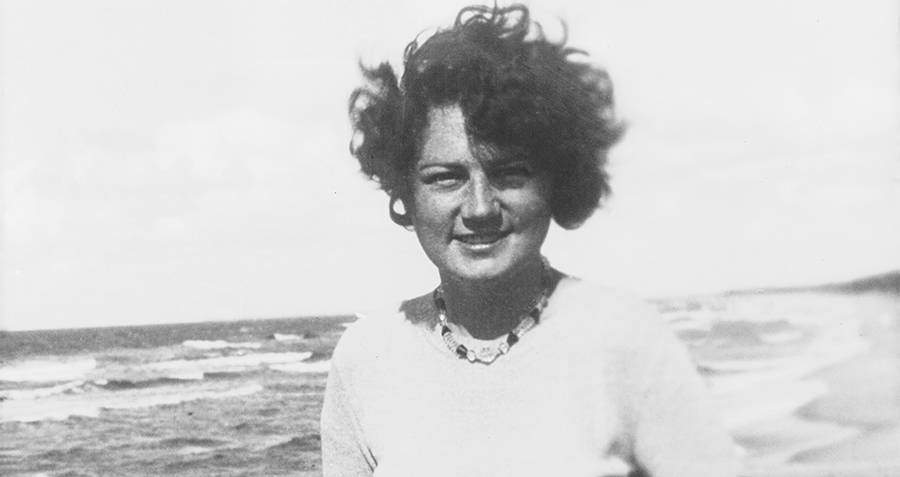
Hulton Deutsch/Getty ImagesGeli Raubal as a teenager.
In 1928, Adolf invited Angela and her daughters, Geli and Elfriede, to move to his mountain retreat, Haus Wachenfeld Obersalzberg near Berchtesgaden, to work as his housekeepers. Her son Leo is missing from the records, and it is unclear where he was.
Eventually, Angela took on the role of running the whole Hitler household.
Geli was now 17 years old and had blossomed into a charming, beautiful young woman. Adolf, who she affectionately addressed as “Uncle Alfie,” was immediately smitten. He began parading his half-niece around, bringing her to cafés and cinemas around town and paying for her music lessons. She became an instant celebrity, famous and fawned over as the consort of a rising political power.
After two years, at her half-brother’s request, Angela moved to Adolf’s larger home, his mountain villa in Berchtesgaden. He asked Geli to stay behind with him and live in his luxurious apartment in Munich with him.
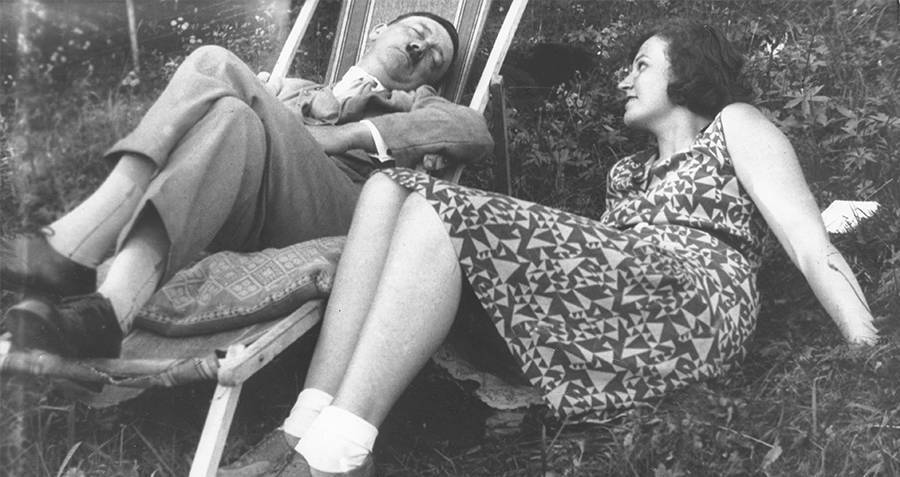
Ullstein Bild Dtl./Getty ImagesGeli Raubal and Adolf Hitler lounging on the grass outside his home.
It is unknown whether her acceptance of this proposal was coerced or made on freewill; nevertheless, Geli separated from her mother and stayed with Adolf who became increasingly controlling of every aspect of her life.
The truth of their relationship is shrouded in mystery, but the rumors suggest “a forbidden love affair, scandalous sexual meetings, and a relationship riddled with jealousy.”
Adolf was reportedly driven to jealousy by those who flirted with his beautiful half-niece. Geli was jealous of the attention Adolf paid to Eva Braun, the young model employed by his photographer. She became his “world, his obsession, and potentially his prisoner.”
At 23 years old, Geli allegedly became determined to travel to Vienna and become engaged, but Adolf refused to let her leave.

ullstein bild/ullstein bild via Getty ImagesAngela Hammitzsch, born Angela Hitler, far right, on a family outing.
Days later, Geli was found dead in his apartment on September 19, 1931.
A bullet was lodged in her chest and Hitler’s gun lay by her side. The Fränkische Tagespost reported that “mysterious darkness” surrounded the death of this “unusual beauty.” The story goes that she committed suicide, however, there was never an inquest or autopsy, and rumors of murder circulated.
After her daughter’s death, Angela Hitler “hinted at murder, or else suicide under compulsion or strong suggestion.” However, she did not accuse Adolf directly. On the contrary, she insisted that “Adolf was determined to marry Geli.” In fact, many see Geli’s death as the moment that Adolf Hitler “went bad” as his grief was so profound.
Angela Hitler continued to work for her half-brother for a short while after her daughter’s death. But she did not approve of his relationship with his mistress Eva Braun, and it is possibly for this reason that she left his household and moved to Dresden.
Life During And After World War II
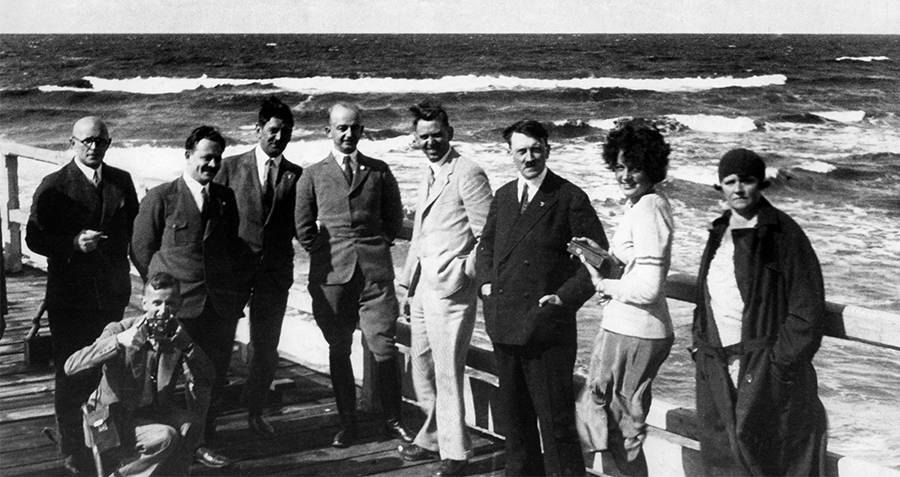
Ullstein Bild Dtl./Getty ImagesThe Hitler family on an outing, with Geli and Adolf second and third from the right, and Angela Hitler on the far right.
In 1936, Angela married for the second time, becoming Angela Hammitzsch. They did not have any children together.
Adolf did not approve of Angela’s marriage and referred to her formally as “Frau Hammitzsch.” Nevertheless, Angela was the only person in the family that Adolf communicated with during the war.
Not much is known about the nature of their relationship during this period, but it is known that after the British-American aerial attack of Dresden in 1945, Adolf arranged for Angela to be moved to Berchtesgaden to keep her safe from Soviet capture.

Wikimedia CommonsBoth Adolf Hitler’s sisters would come to defend him following the war.
Angela Hitler’s second husband died in 1945 after committing suicide at Germany’s defeat, leaving Angela a widow once again. After Adolf committed suicide, Angela was left a monthly pension by him, but it is unclear whether she ever saw any of that money.
Like his younger sister Paula, Angela defended Adolf. She insisted that neither she nor Adolf knew anything about the Holocaust, remaining loyal to her beloved half-brother till the very end, when she suffered a stroke at the age of 66 in Hanover on October 30, 1949.
After learning about Hitler’s loyal half-sister Angela Hitler, read about his last remaining descendents who have all vowed to end the bloodline. Then read about the potential secret child the Führer may have fathered.
